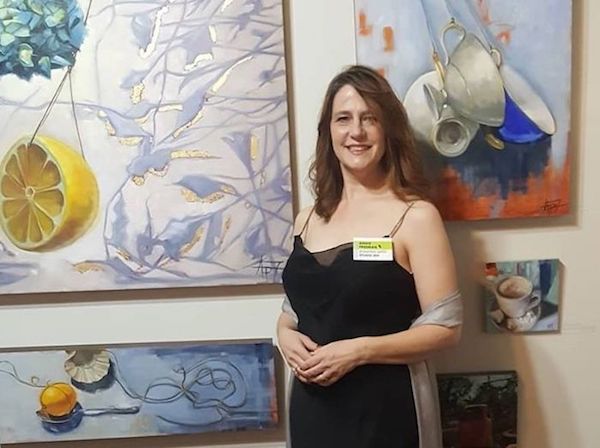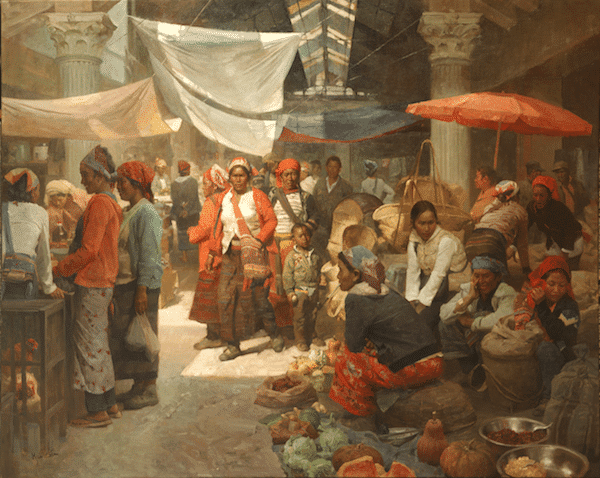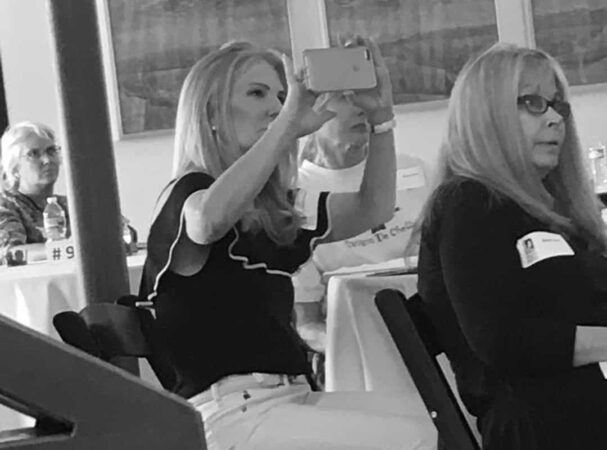The first sign that you are an entrepreneur is thinking, “Wow, this is a LOT.” If you’re NOT feeling a little overwhelmed, you’re not in charge of a business. The only people who don’t feel that way are employees that punch in after breakfast and walk at the bell. If it weren’t a lot, everyone would do it.
No one ever became a great artist by clocking in at nine, having a full hour-long lunch every day, and watching all their favorite shows after the dinner gong has gone off. “Hurry home! It’s time for Judge Judy!” The greatest adventures require you to do an exceptional number of tasks really well.
Juggling both the craft and the business is a lot. And both sides are necessary—no business ever succeeded by focusing only on production/product development at the expense of sales and marketing, or vice versa. That said, there’s a lot of knowledge that entrepreneurs build up, share, and swap that helps them manage all of these activities.
You Don’t Have To Do It All At Once
 The whole purpose of setting milestones for your business is to allow you to define success as something that can be achieved incrementally. If all you do is say, “Someday, I’ll get there,” you’re singing a line from Cinderella: “Someday, my prince will come…” The non-Disney truth about “someday” is that it never comes. Today is that day. What are you doing right now, right here, in this moment, to further your desired life and career?
The whole purpose of setting milestones for your business is to allow you to define success as something that can be achieved incrementally. If all you do is say, “Someday, I’ll get there,” you’re singing a line from Cinderella: “Someday, my prince will come…” The non-Disney truth about “someday” is that it never comes. Today is that day. What are you doing right now, right here, in this moment, to further your desired life and career?
There is a certain amount of space in any given day in which you can extend yourself. And then, like in yoga, your practice is to come back to a resting state–to come back to yourself. The moments of NOT straining are as important as those devoted to stretching. Increments are increments. You sort them by priority and tick them off as tasks, until it’s time to come back to yourself and to your practice as a creator. You breathe, rest, and then stretch again the next day. And so on. It’s a rhythm, not a race. We all learned this as babies, when we started to walk by putting one foot in front of the other.
Distractions Convince Us It’s Too Big
It’s easy to get distracted by lots of things—to conflate tracking the numbers with using the tools. “Oh no! I have to learn six new pieces of software!” We forget that, like the baby finding his feet, we already have most of the tools we need. Maybe some shoes would be nice at some point, but all we’re really doing is learning to deploy what we already have in the most efficient way. You are already able to set priorities, break down goals into plans, and break down plans into tasks, and you can already write down what you’re doing and note the dividends you’d like to increase.
But just like with stage fright, our warning systems (fight/flight) are conditioned to kick in when we face something that’s a little bit new and challenging. New isn’t good, that monkey mind tells us, because that’s how the brain kept ordinary monkeys from making dangerously experimental decisions. “What if I put my hand down that snake hole and grab the snake? It’s scary and unknown. I’d rather eat my banana and not look for anything better.”
For the exceptional primates, however, our aspirations drive us forward, putting us in conflict or chaos with ourselves, and that’s how ALL change is wrought in the world.
There’s a Path, Not a Jungle
I take comfort from this line in the film The Edge: “What one man can do, another man can do.” That means that the thing I wish to do IS possible because others have done it.
Ever since I was a toddler, I have established a track record of doing new things. When a certain part of my brain kicked in and said “No! It’ll be tough. Don’t make that move,” I did not listen. I did not retreat to my spot on the floor. Instead, I accomplished new things by taking it one step at a time.
The Stories We Share
The three truths above are the same ones that have been embraced by everyone who’s ever made progress in their lives, and they’ve been invaluable to me as well. When you put on your entrepreneur’s hat, the things you learn about yourself and your capabilities are just as important as the knowledge you gain about marketing, sales, and other business matters.
I am not just in this with you as CHF’s educational director; we are also on similar paths. It’s been so encouraging to know that I don’t have to singlehandedly invent the keys that unlock the mysteries of life. What one person can do, another can do.
As a species, we’ve migrated together across glaciers, tundras, and wilderness. We’ve camped around fires and told stories for millennia that follow the same essential plot: a desire, an obstacle, some stakes, a protracted struggle, and a climactic breakthrough.
We share these stories with each other because they contain insights—the key to the mysteries of ourselves and our passion for the work that we do. It will not come all at once. It will seem too big (even though in the end, it won’t have been). We will wrestle with it. But we will not be alone in that struggle. We are ALL living this story.








Oh, so great. Thank you, Daniel. Just what I needed. Just what a lot of us will need on those uncertain days that pop up sometimes.